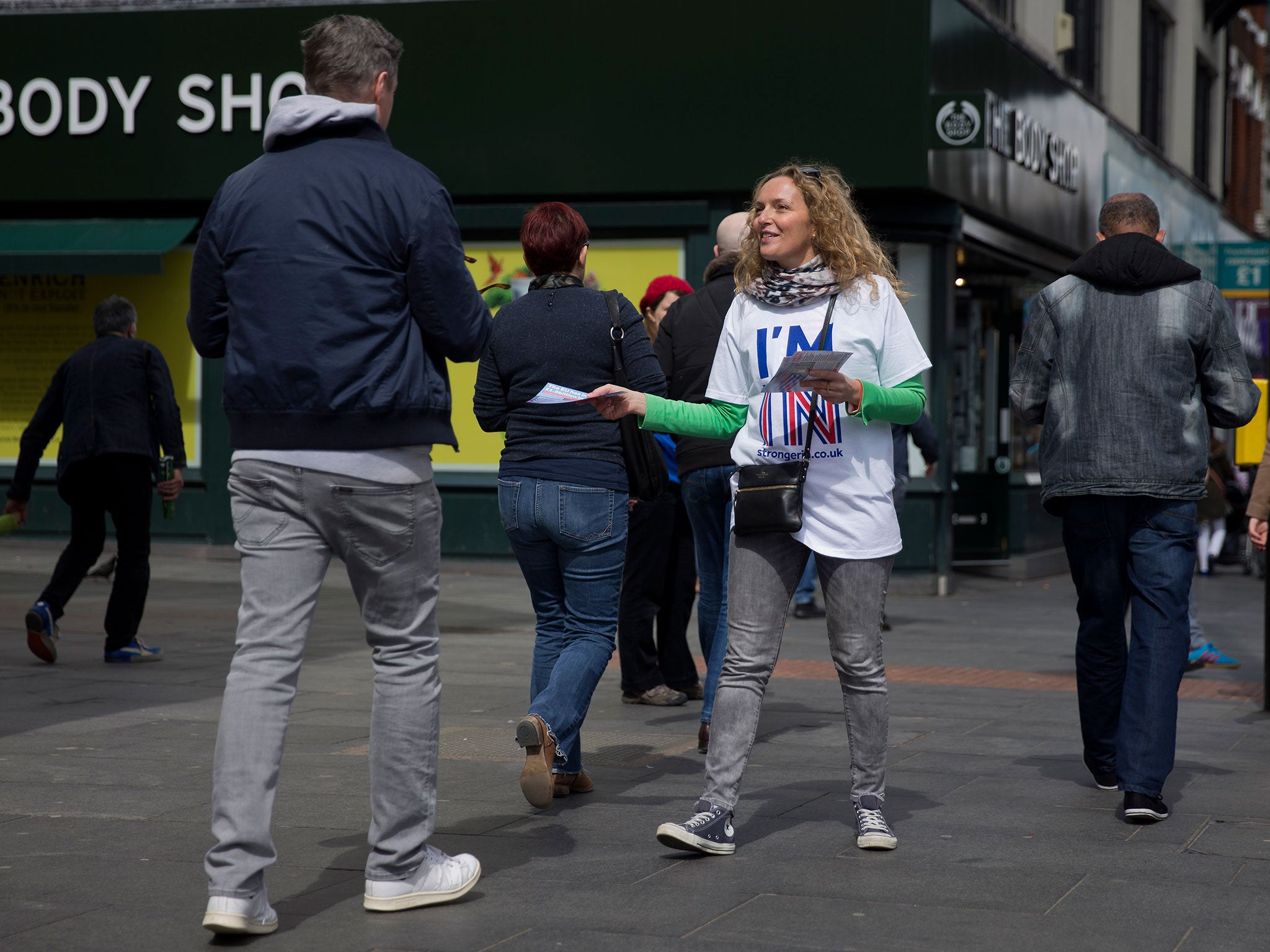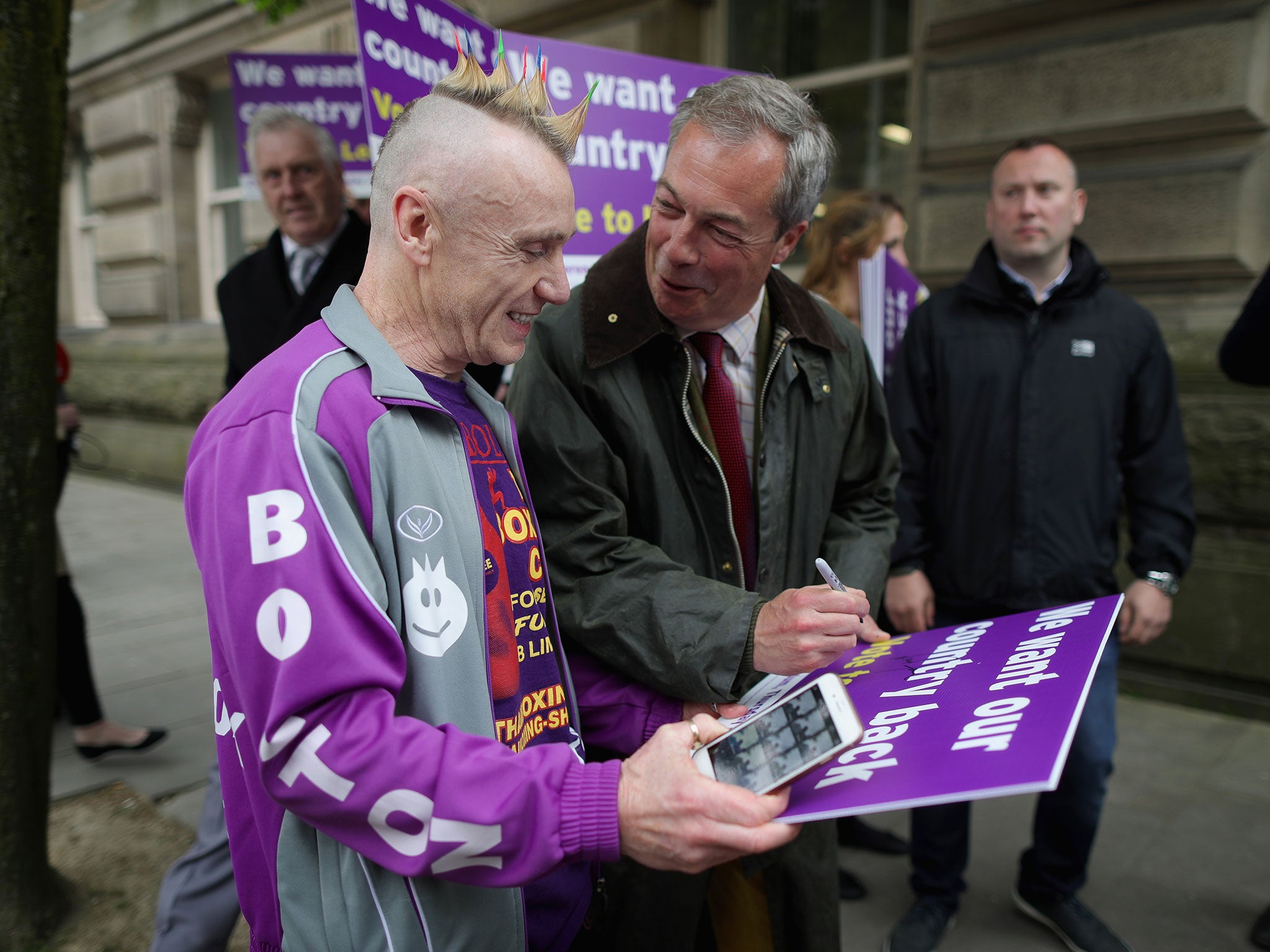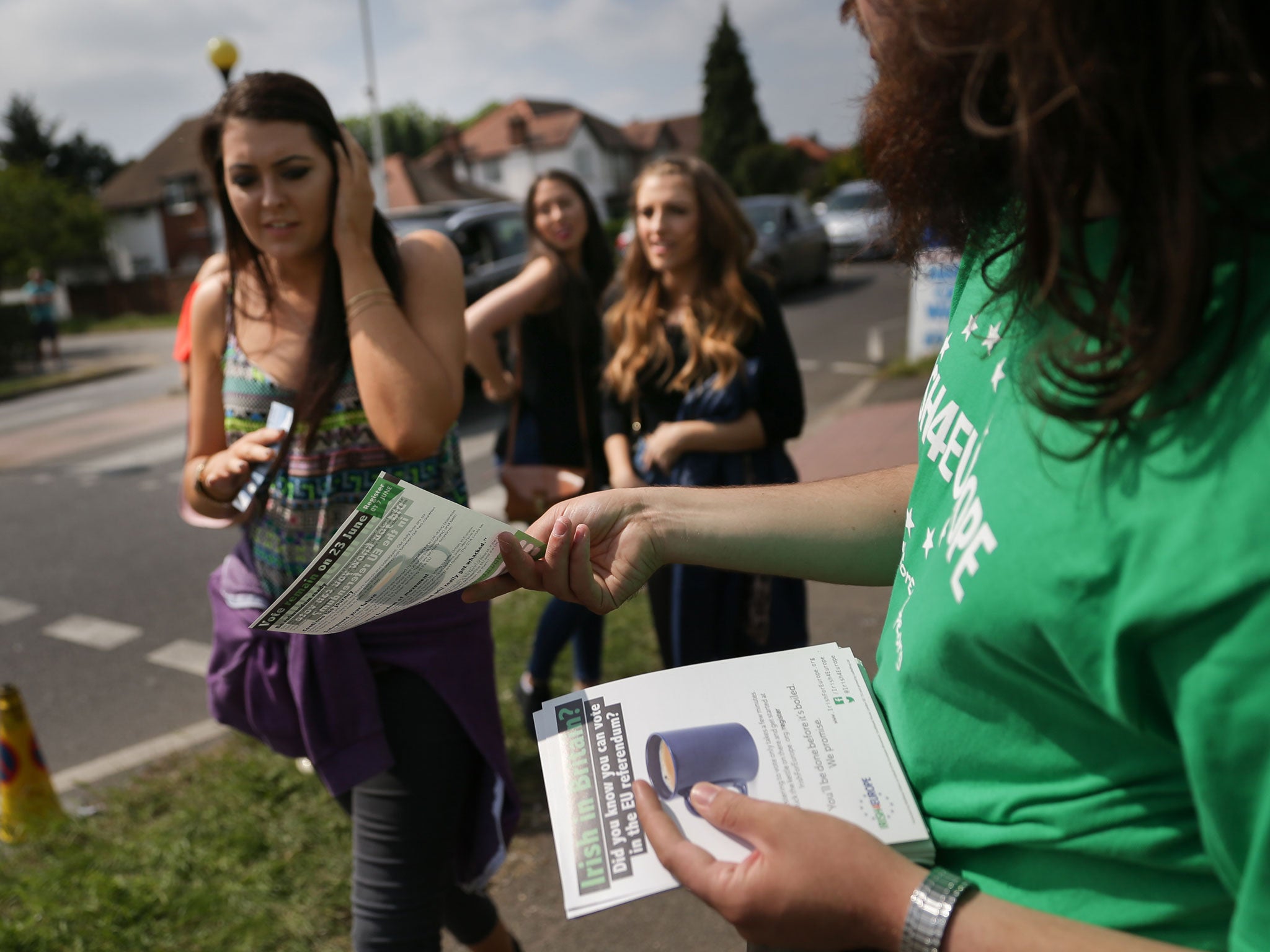How big an impact could turnout have on the referendum result?
The big EU questions: With a month to go before the potentially epoch-making vote on British membership of the EU, the debate so far has been characterised by bias, distortion and exaggeration. So from now until the referendum we will be running a series of question and answer features that will explain the most important issues involved in a detailed, dispassionate way to help inform your decision

Your support helps us to tell the story
From reproductive rights to climate change to Big Tech, The Independent is on the ground when the story is developing. Whether it's investigating the financials of Elon Musk's pro-Trump PAC or producing our latest documentary, 'The A Word', which shines a light on the American women fighting for reproductive rights, we know how important it is to parse out the facts from the messaging.
At such a critical moment in US history, we need reporters on the ground. Your donation allows us to keep sending journalists to speak to both sides of the story.
The Independent is trusted by Americans across the entire political spectrum. And unlike many other quality news outlets, we choose not to lock Americans out of our reporting and analysis with paywalls. We believe quality journalism should be available to everyone, paid for by those who can afford it.
Your support makes all the difference.If some of the recent polls are anything to go by, it could be the difference between Britain staying in and leaving the EU. A British Election Survey study of 22,000 voters in May, one of the largest to date, gave Remain a 43 to 40.5 per cent lead overall – but among voters who said they were very likely to vote, the result was reversed, giving Leave a narrow 45 to 44.5 victory.
It’s hard to predict with accuracy how many will turn out to vote – but it could be a decisive factor.
But how big is turnout likely to be?
This is notoriously difficult for pollsters to predict. People usually say they will vote, but that doesn’t mean they actually will come polling day. The best precedents we have to go on are the referendum on our membership of EU-precursor the European Economic Community, way back in 1975, which had a 65 per cent turnout, and the Scottish independence referendum of 2014, which had a huge 85 per cent turnout. Last year’s general election, meanwhile, saw a 66 per cent turnout.
Making accurate predictions about turnout is near impossible, but it would be surprising if it was as high the Scottish referendum, and is more likely to be similar to that of a general election, if not a little lower.
Who is eligible to vote on 23 June?
All British and Irish citizens over the age of 18 living in the UK, as well as Commonwealth citizens who have leave to remain in the UK. British citizens who have lived abroad for less than 15 years also get a say. A British Second World War veteran living in Italy and a lawyer living in Belgium challenged the time limit on this, but lost their Supreme Court battle – meaning hundreds of thousands of long-term expats won’t be able to vote.
And if I am allowed to vote, am I automatically registered?
If you were registered to vote in the most recent local elections, you will be. If you’ve moved home since then, you’ll need to re-register. And if you’re not sure you can contact your local electoral registration office.
What’s the deadline to get registered?
7 June, which is quite soon, hence the recent flurry of publicity urging people – the young in particular – to get registered.

Why are the young a particular concern?
Because historically they are less likely to be registered to vote, or to turn out even if they are registered. In the last general election only 43 per cent of 18- to 24-year-olds voted, compared to 78 per cent of over 65s. If the turnout in different age groups is similar for the EU referendum it could have a big influence on the vote – and the Remain camp are worried.
Why?
Because all the polling suggests a stark generational divide in attitudes. A survey in April by Opinium found that Eurosceptic tendencies increase with age. Among 18- to 34-year-olds, a whopping 53 per cent back a Remain vote, with only 29 per cent backing Leave. But among the over 55s this pattern is almost perfectly reversed, with 54 per cent saying they’ll vote to leave and only 30 per cent plumping for Remain.
The Bite the Ballot group estimated in April there were four million young voters "missing" from the electoral roll. It will launch a major registration drive this week.
Who would benefit most from a low turnout?
At this stage, probably the Leave side. Polls suggest that their voters are more likely to go out and vote, therefore if overall turnout is low it could be those committed Leave voters who sway it, while "soft" Remain voters, including many young people, stay at home.
However, the advantage the Leave camp has in this respect is, to some extent, balanced by the fact that support for Remain is higher among some other demographics who are more likely to vote – the well-off and highly-educated.
Divisions in opinion between different levels of education are actually very stark: according to YouGov, university graduates are 70 to 30 in favour of Remain, whereas those with GCSEs as their highest qualification are 68 to 32 per cent for Leave.
Similar divisions are seen between employees in professional roles and those in less skilled jobs. Previous elections tell us that the more well-off and more highly-educated are also more likely to vote.

So it's quite a confusing picture?
Yes, you could say that. YouGov has asked 5,000 recent survey respondents how likely they are to vote, out of 10. Leave supporters had an average score of 9.07 and Remain just behind on 8.93. So while the reliable grey vote looks strong for Leave, and Remain could be hit by a low turnout among the young, its strong showing among the professional classes could counteract this "turnout" advantage.
Which other groups tend to be more or less likely to vote?
People from ethnic minority communities look less likely to vote.
The British Election Survey found that only 57 per cent of Indian, 58 per cent of Pakistani, and 57 per cent of black Caribbean voters said they were certain to vote in the referendum – this compares to 79 per cent of the general population. These figures were based on quite small samples of ethnic minority voters, but are cause for concern.
Operation Black Vote has already launched a campaign to get more ethnic minority people to vote – including a controversial poster showing a white skinhead balancing on a see-saw with an elderly Asian woman, with the tagline: "A vote is a vote".
YouGov has helpfully listed demographic and political groups by likeliness to vote. Unsurprisingly, it is those with "high political interest" who are most likely (and who tend to back Remain). Second most likely to vote are Ukip supporters, followed by Conservative supporters in third. Labour supporters are way down in seventh – a stat which has some commentators arguing the party needs to do more to galvanise its voters if it wants Britain to remain in the EU.
The demographic groups least likely to vote, according to YouGov, are those with "low political interest", followed closely by 18 to 29-year-olds
Join our commenting forum
Join thought-provoking conversations, follow other Independent readers and see their replies
Comments